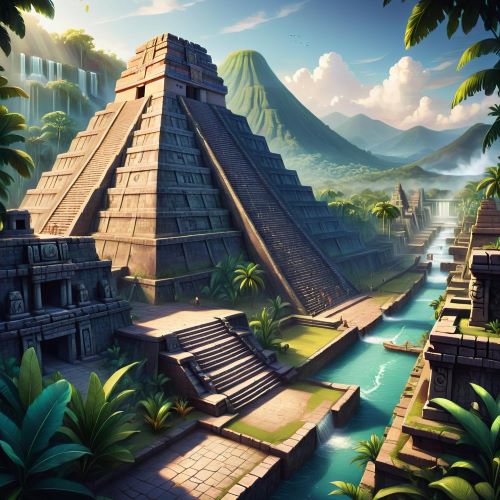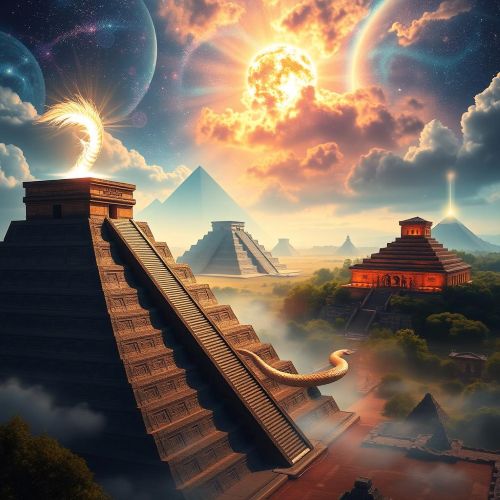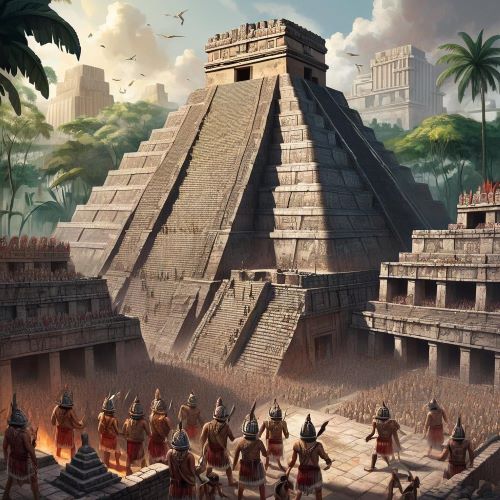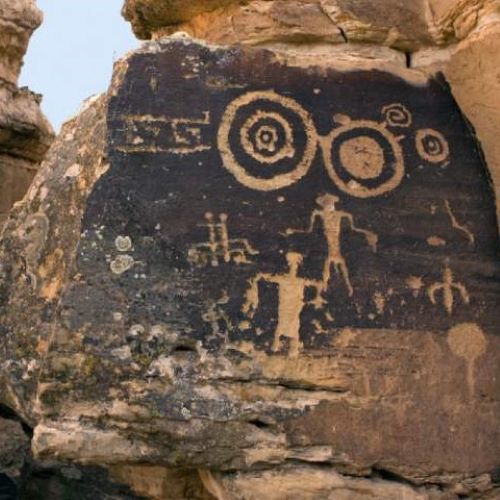The Huastec People: Ancient Artists of Mesoamerica
The Huastec people were one of the most intriguing and culturally distinct civilizations of ancient Mesoamerica. While not as well-known as the Maya or Aztec, the Huastecs left behind a remarkable legacy in the fields of art, music, and spirituality. Their influence stretched across the Gulf Coast of Mexico, particularly in the modern-day states of Veracruz, San Luis Potosí, Tamaulipas, Querétaro, and Hidalgo. With a unique blend of linguistic independence, vibrant artistic expression, and religious traditions, the Huastec people stand out as a vital part of Mesoamerican history.
Origins and Language of the Huastec People
The Huastec people are particularly notable because their language, Wasteko or Téenek, belongs to the Mayan language family. This connection has long intrigued archaeologists and linguists, since the Huastecs were geographically isolated from the main Maya regions of the Yucatán and Guatemala. Theories suggest that the Huastecs may have split from the Maya as early as 2000 BCE, migrating northward to settle along the Gulf Coast.
Despite their Mayan roots, the Huastec people developed a culture that was distinctly their own. Their separation meant that, unlike the Maya who flourished in the lowlands and jungles of Central America, the Huastecs adapted to the coastal and river valley environments of Mexico, thriving on fishing, agriculture, and trade.
The Culture and Society of the Huastec People
Huastec society was highly artistic, with a strong emphasis on sculpture, pottery, and music. Their clay figurines and ceramic vessels are considered some of the most expressive in Mesoamerica, often depicting intricate hairstyles, tattoos, and body ornaments that reflected their daily life and rituals.
Music was another cornerstone of Huastec culture. Archaeological findings reveal instruments such as drums, flutes, and rattles, suggesting that music and dance played a central role in both religious ceremonies and community celebrations. This tradition continues today in the regional style of music known as Huapango Huasteco, which blends indigenous and Spanish influences.
Religion also played a central role in Huastec life. They practiced polytheism, venerating gods of fertility, rain, and agriculture. Human sacrifice, though less frequent than in Aztec society, was a part of their ritual system. The Huastec pantheon shared similarities with other Mesoamerican cultures, yet they developed unique forms of worship that reflected their distinct identity.
Daily Life and Economy
The Huastec people lived in small city-states, with economies based on agriculture, fishing, and trade. They cultivated maize, beans, squash, and chili peppers, which formed the backbone of their diet. Their proximity to rivers and the Gulf Coast also meant that fishing and salt production were important activities.
Trade connected the Huastecs with neighboring groups, including the Totonacs and later the Mexica (Aztecs). This exchange allowed them to acquire goods such as obsidian, jade, and cotton textiles, while spreading their own artistic styles and religious ideas throughout the region.
The Huastec People and the Aztecs
By the late Postclassic period (around 1450 CE), the Huastec people came into conflict with the expanding Aztec Empire. The Aztecs saw the fertile Gulf Coast as a strategic territory for resources, particularly cotton and salt. After several military campaigns, the Huastecs were conquered by the Aztecs under the rule of Moctezuma I.
Although subjugated, the Huastec people retained much of their cultural identity. The Aztecs required tribute in goods but allowed the Huastecs to continue practicing their traditions, as long as they did not resist imperial rule.
Spanish Conquest and Legacy
The arrival of the Spanish in the early 16th century further disrupted Huastec life. Like many indigenous peoples, they suffered from disease, forced labor, and cultural suppression. However, despite these challenges, the Huastec people preserved their traditions and language.
Today, the Huastec culture continues to thrive in parts of Mexico, especially through their music, dance, and festivals. The Danza de los Huastecos and Huapango music remain central to cultural celebrations, blending indigenous heritage with colonial and modern influences. The Téenek language is still spoken by tens of thousands of people, keeping alive a linguistic connection that dates back thousands of years.
The Significance of the Huastec People in History
The Huastec people embody resilience, creativity, and cultural diversity within Mesoamerica. Their story highlights how ancient societies were not isolated but interconnected, influencing and adapting to one another across time. Their art and music, in particular, serve as enduring symbols of their worldview, showcasing the richness of indigenous expression.
For modern Mexico, the Huastec legacy is more than just history—it is a living tradition. Whether through music festivals, artisan crafts, or the preservation of Téenek, the Huastec people remind us of the importance of safeguarding cultural identity in an ever-changing world.
No posts were found.









